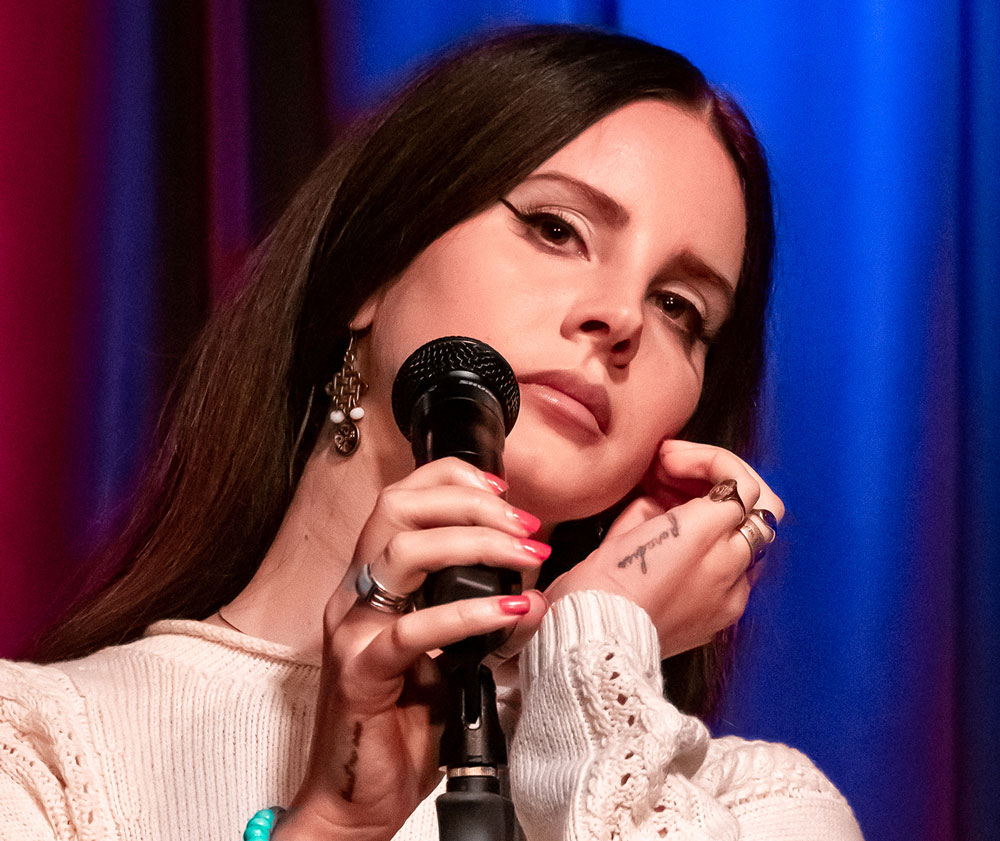![]()
There are a lot of pretty girls in Norwegian photographer Torbjrn Rdland’s work. Yet his interest in melancholic eroticism is just one aspect of a complicated practice which touches on the meaning and process of photography. Much of his current work seems to be pushing the limits of the body – how it can be twisted and contorted, how skin can be drawn on, covered up, transformed. Working fluidly in colour and black-and-white, Rdland, like Ryan McGinley, has managed to create images accepted by both the “cool” press and art establishment. This January Rdland opens an exhibition in Copenhagen focusing on American landscapes and presidents, especially Reagan and Kennedy. “I’m fascinated by how quickly chaotic reality becomes mythologised. The Ronald Reagan I got to know through news media as a kid is not the same Ronald Reagan children today are introduced to,” he points out. Here Rdland talks to Dazed about his fascination with Americana and our Instagram world.
What do you find interesting about referencing and exploring ideas around Americana?
I’ve always felt connected to American vulgarity – in poetry, pantheism, rock’n’roll and hip hop. Studying visual cultures of Japan, Scandinavia and North America helps me figure out what I’m about and where I can take my photography.
Why did you end up in LA?
I gave up on all the alternatives. Los Angeles is a good mix of villages, cities and nature. And it’s founded on mythology. I don’t know how the place is influencing the work exactly, but I know myself better now than before moving here. I cannot promise that I’ll end up in California though.
Tell me about the role of construction in your images. Are things ‘found’ or are you more interested in creating things to feel ‘found’?
Probably both, but definitely the latter! One problem with so-called ‘staged photography’ is the look of these didactic tableaus, making it very clear that you’re studying a construction. It doesn’t really matter to me how the photograph came into being. The important question is how to see it: how the photograph asks to be read. I can be equally invested in an object I just found as one I waited six months to get or travelled from continent to continent with, but in general it helps to live with it for a while. I typically keep something around for months before dealing with it photographically. Situations with people are always sessions. I decide the clothes and so on. I never just pull out a camera and start ‘shooting’. You can wait around your whole life for something interesting to happen in front of you. I believe in forcing a more active approach.
Yet despite this there is a quietness to your work – is that something you strive for?
No, that comes naturally. My physiognomy is quiet. I strive for action and for the work to speak up.
How and why did you start working with people in contorted positions?
Well, maybe it’s an early sign of decadence if I tire of human figures in more relaxed positions. I hope not. I always try to stretch the medium, to push at the limitations of what I can do within straight photography. Having photographed people for more than ten years, maybe I had to push and bend more drastically to stay interested.
Tell me about your latest book. Why did you call it Vanilla Partner?
The title was free. There were no albums, books or even a kinky movie named Vanilla Partner. And it says something about a relationship I find myself in: photography is my straight partner. I try to introduce fantasy and religion to it, but it’s not easy.
You also seem to be really interested by texture at the moment – something sticky, fluffy, visceral. What is attracting to you to that tactility?
It’s all we have. A painter has the texture of the picture itself, the tactility of paint on canvas. In photography the focus is on how other surfaces are represented photographically. I always look at what painters do.
In a lot of your earlier images you represented women in nature – it’s a classic romantic concept. Were you interested in playing with that art historical heritage?
I don’t play with or reference art history; I see myself as adding to it. To photograph beautiful women in nature was a challenge, partly because it’s inflamed, both aesthetically and politically. I like to think that my images take active part in a discussion on how and what they mean. This was a central aspect of the project from the very beginning. To link a primate to nature makes perfect sense. The real problems start when you say she doesn’t also represent culture, and clearly I’ve never gone there.
What attracts you to depicting femininity in particular? Do you feel there’s a tension there as a man?
Yes, the tension can be different – also in a wider sense. Everyone loves and hates pictures of young women. It’s intense! Most people seem so caught up in their own bodies and personal perspectives on this material that they cannot see it for what it is.
A number of the images in Vanilla Partner depict people being drawn or painted or tattooed on. How did this motif develope and what the idea was behind it?
I think it developed from black-metal corpse paint. Back in 2001 I photographed leading musicians on the Norwegian metal scene. Looking at my portraits of Frost (of Satyricon), Abbath (of Immortal) and Infernus (of Gorgoroth) started me thinking about the psychological implications of paint on skin. There’s also a smaller photograph from the following year… it has a German title: Goldene Trnen. This is a portrait of a young woman with lines of honey on her face. An art historian will probably see it in the Catholic tradition of the crying virgin, while a dude reading Dazed online is more likely to see a facial. I’m drawn to pictures that cannot easily be pinned down. I like conflicting readings – I think you find truth there. But to return to the question: there was no initial idea behind all this – maybe more of a longing. I now see painting on skin as an immediate escape from the confusion and boredom of everyday life. Hairless apes have always listened to music and painted their bodies to make life more real. It’s linked to a spiritual longing that is everywhere in my work.
How do you feel about the ubiquity of image culture today, compared to when you started working with photography?
Younger people today seem unburdened by the quantity of photographic images being produced. This, of course, is a healthy attitude. There will always be a need for subtle reformulation. The situation when I started was more anorexic. Reality seemed lost behind an excessive overproduction of photographs. The postmodern mindset saw no reason to make new pictures; we had already produced too many. Reappropriation was almost a moral choice. It’s funny; looking back, the early 1990s now seem like a calm period of libraries and magazines, before the online explosion of Instagram, Tumblr and TwitPics. Today I see Instagram feeds adopting strategies from critical art filtered through the Fail Blog perspective on commodity culture. It’s quite exciting and I’m not contributing.
Your approach has been emulated by a younger generation of photographers, including those working with fashion as much as within an art context. Is that a frustrating or interesting situation for you?
We both know that fashion photographers adopt anything that moves to a beat. I’m actually more puzzled by the massive number of educated young art-photographers who approach the world like an Alec Soth. I always saw my material as coming out of a culture just as much as being the product of my conflicting personality. So I do not claim full ownership.
What do you think the role of emotion is in photography? Is it something you strive to create in your viewer or your images?
That is a very good question – I’m still struggling with it. Asking for an emotional reaction is asking to entertain or to sell something. This, at least, is the standard view. My more emotional photographs are created to make the viewer reflect, but I’ve also seen them have an emotional effect on people and that didn’t seem all wrong. Actually, it didn’t seem wrong at all.
Vanilla Partner by Torbjrn Rdland is out now, published by MACK
rodland.net
Visit site –




